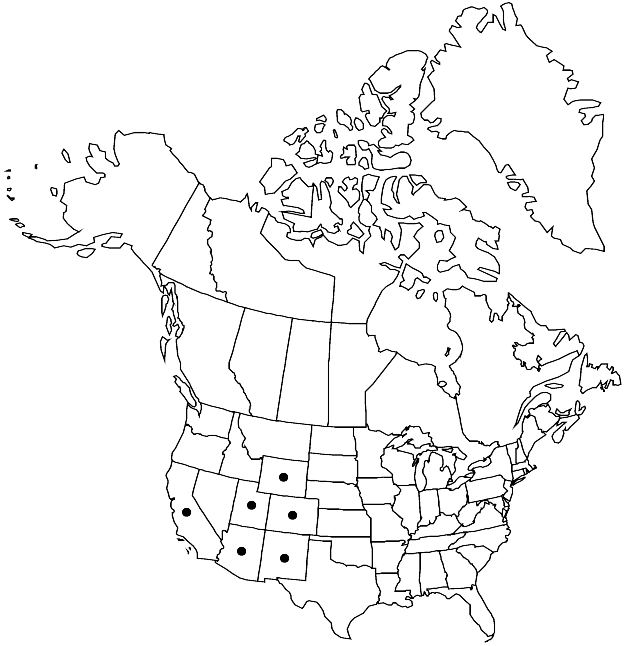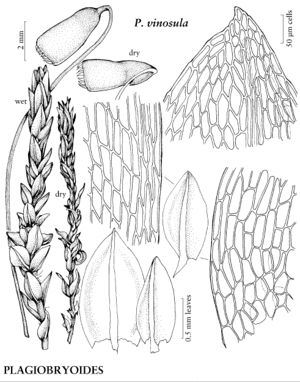Plagiobryoides vinosula
Phytologia 91: 499. 2009.
Plants bright green. Stems 1–2(–3) cm, not julaceous, innovations many; rhizoids few on proximal stem. Leaves not crowded, somewhat contorted to imbricate when dry, erect when moist, narrowly to broadly ovate, flat or weakly concave, 0.6–2(–3) mm; base not decurrent, red; margins plane or recurved proximally, 1-stratose, limbidium absent or rarely indistinctly 1-stratose proximally; apex acute; costa reaching apex to very short-excurrent; proximal laminal cells long-rectangular, (60–)80–100 × 18–24 µm, 4–5:1, sometimes bulging, walls thin; distal cells elongate hexagonal, 25–60 × 16–22 µm, 1–3:1, walls thin. Specialized asexual reproduction by rhizoidal tubers on rhizoids at base of stem, (200–)250–400 µm. Sexual condition dioicous. Seta thick, (1–)2–3 cm, flexuose to twisted. Capsule suberect to inclined, 2–3 mm; hypophysis weakly differentiated, short; operculum apiculate; peristome well developed; exostome pale yellow proximally, teeth lanceolate, long; endostome hyaline to pale yellow, not adherent to exostome, segments present, sometimes longer than exostome, cilia usually absent, occasionally 1 or 2. Spores 18–26 µm, papillose, yellow-brown.
Phenology: Capsules mature Jun–Sep.
Habitat: Damp calcareous rock, springs, hot springs
Elevation: moderate to high elevations (800- 2200 m)
Distribution

Ariz., Calif., Colo., N.Mex., Utah, Wyo., Mexico (Jalisco).
Discussion
Plagiobryoides vinosula has been synonymized with P. cellularis, but differs in having bright green elongate stems, leaves that are somewhat contorted when dry, and typically shorter distal laminal cells and rhizoidal tubers. Plagiobryoides vinosula has been found recently in hot springs in Colorado and Wyoming.
Selected References
None.
